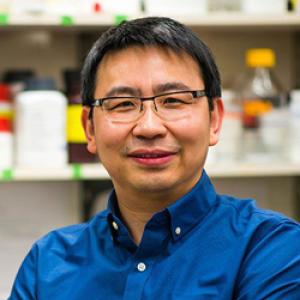
Wei Yang, PhD, FAHA – 2011
2011 DIG Research Projects | “Role of SUMO2/3 Conjugation Pathway in Cerebral Ischemia/Stroke”
One in five strokes are experienced in the perioperative period, making stroke prevention a strong area of interest to anesthesiologists. After stroke or trauma occurs, extensive and abnormal neuronal cell death occurs due to cellular stress and ischemia (restriction in blood supply), which can result in impaired survival or altered behavior. It is believed that a process called SUMOylation may have a role in protecting against this neuronal cell death.
Human beings have three of the isoforms involved in the process of SUMOylation (SUMO-1, SUMO-2, and SUMO-3). The first step of this project was to create genetically modified mice that lack SUMO-2 and SUMO-3 isoforms. Once these genetically altered mice were bred, Dr. Yang’s lab reintroduced the missing proteins and compared how the mice responded to cellular stress and ischemia. The goal of this study was to learn more about the function of the missing isoforms and use the information to better treat humans and prevent stroke.
Dr. Yang was awarded a four-year, $308,000 NCRP Winter 2012 Scientist Development Grant from the American Heart Association.